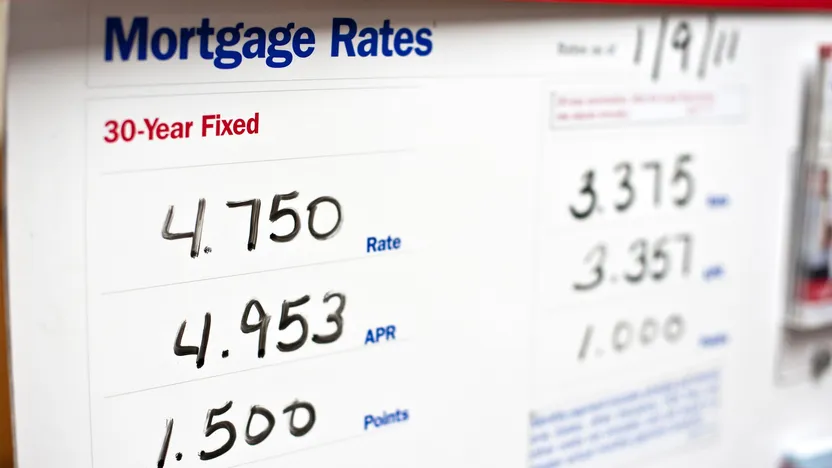Nov 13, 2023

In the seemingly never-ending mortgage lexicon of home buying and selling, one term in particular stands out as a source of confusion: the origination fee. What is an origination fee? It’s something every homeowner needs to understand. And the good news is that it’s not actually that complicated.
In basic terms, an origination fee—sometimes referred to as a discount fee—is money that a lender or bank charges a client to complete a loan transaction. An origination fee can encompass a variety of different fees added together, says Mark Ventrone, owner and broker with ABLEnding, based in California and Arizona. It can include underwriting fees, administrative fees, processing fees, discount fees (also known as points), and any other fee charged by the lender and/or broker to the borrower.
Origination fee vs. points
Lenders generally speak about the money associated with origination fees as points. The term “point” is slang for 1% of the loan amount; 1 point = 1%. And points are part of those aforementioned closing costs charged by your lender, calculated as a percentage of the principal, says Casey Fleming, author of “The Loan Guide: How to Get the Best Possible Mortgage.”
If your loan is for $300,000, one point equals 1%, or $3,000, and two points equals 2%, or $6,000.
Because “points” is not an official term, you won’t see the term on disclosures, but you will see it in marketing materials and hear the term from lenders.
What does the origination fee cover?
Lenders charge an origination fee in part because they have upfront costs in originating a loan (origination fee—get it?), so they try to recoup that money with a fee, says David Reiss, a law professor and academic program director for the Center for Urban Business Entrepreneurship at Brooklyn Law School.
If a lender doesn’t do this, it risks the borrower paying off the mortgage early and before the lender fully recoups the cost of generating the mortgage. And let’s face it—lenders might also charge an origination fee because it can be a profit center for them just like the interest rate.
Another way to think of an origination fee, according to Fleming: It’s the cost a borrower pays a bank for the chosen interest rate.
What does an origination fee cost?
Putting an exact dollar amount on origination fees can be a bit difficult because they are expressed as a percentage of the loan amount. But a standard origination fee for a conventional loan—or a loan amount up to $424,100—typically runs between $750 to $1,200, says Ventrone.
To see the breakdown of your origination fee, check out Page 2 of the loan estimate your lender provides.
“Each fee will be itemized separately in Box A so you will know exactly what you are paying for,” says Ventrone.
If a loan is $200,000 and the lender is charging a half-point (0.5%) to originate the loan, the borrower will need to pay an additional $1,000 in closing costs, says Reiss. If the lender is charging one point (1%), the fee would rise to $2,000. The origination fee generally ranges from 0.5% or 1% of the loan amount, but it can change depending on the bank and the client.
How you can lower an origination fee
The origination fee can’t be reduced. But based on the interest rate you lock in for your mortgage, your lender or broker might give you a credit that you can apply at closing toward the origination fee and potentially toward other costs such as title fees, appraisal fees, or recording fees. You can determine whether you’ll get this lender credit by again referring to Page 2 of your loan estimate and looking at Box J, says Ventrone.
You can also look for a bank that doesn’t charge origination fees.
Another option is to negotiate the fee with the lender. Usually, those who can negotiate best have great credit and income, says Denise Supplee, co-founder of SparkRental and a real estate professional in Pennsylvania. It takes more work for a broker to get a loan for someone with bad credit or unverifiable income, so the origination fee isn’t as negotiable.
Ask several lenders for quotes on a mortgage
It’s always worth shopping around for a loan, because lenders, fees, and other charges can vary significantly. A simple way to choose which lender is offering you better terms is to compare the origination fee and lender credit at a specific rate for the same time frame, because rates are constantly in flux.
“For example, at 4% lender A is charging a $750 origination fee and giving you a $500 credit, meaning you’ll still pay $250,” says Ventrone. “Lender B is charging a $995 origination fee with a lender credit of $1,500, meaning you’ll get a net credit of $505.” In this example, lender B is providing lower terms.
Keep your options open and be patient when shopping for a mortgage; it’ll be worth it in the end when you’re paying a rate that fits comfortably in your budget.
Source- https://www.realtor.com/advice/finance/what-is-an-origination-fee/






